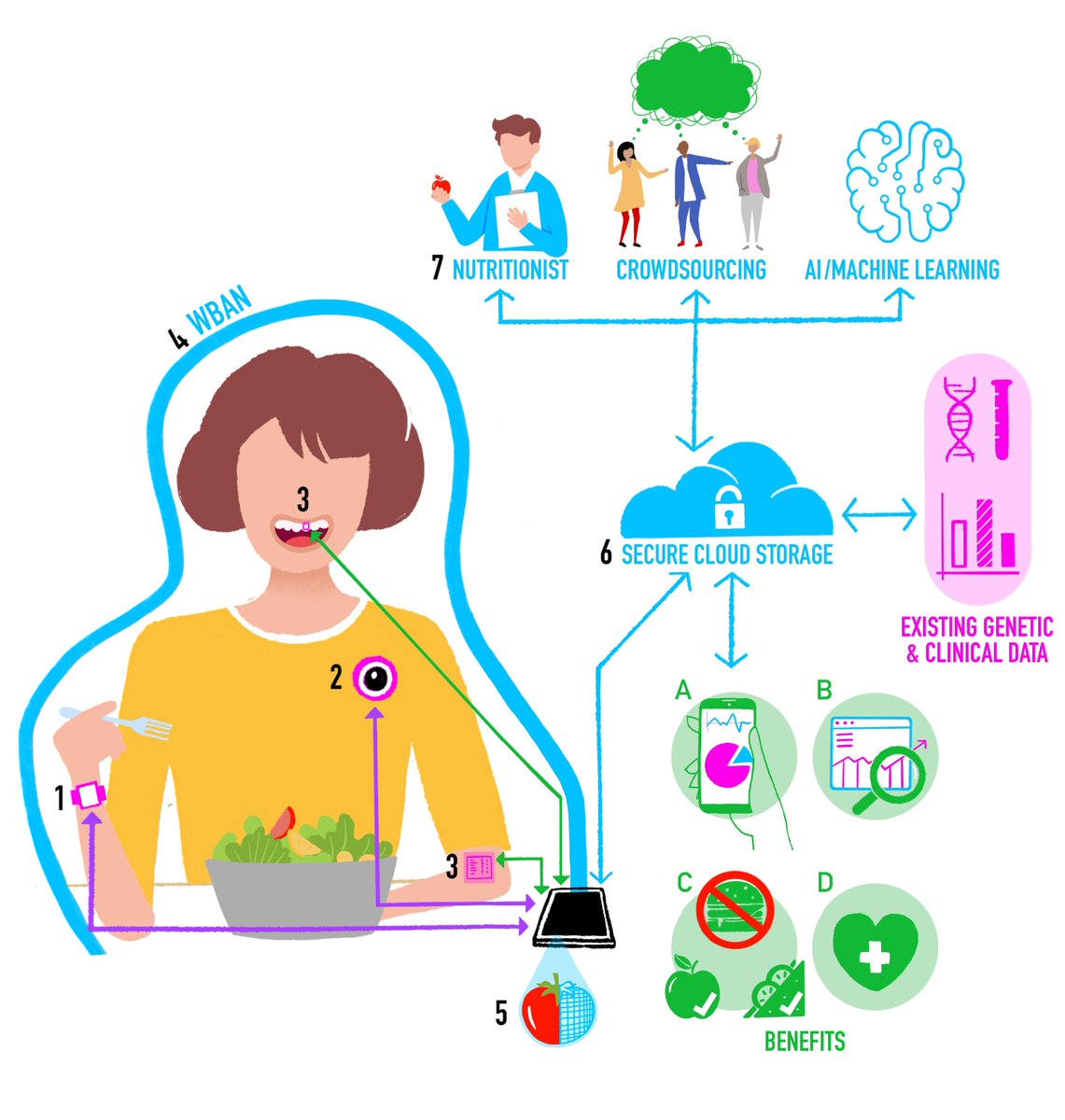1/15 "You are what you eat" that old chestnut! How do we know what food will cure our ills & if breakfast is important at all? Measurement matters! @AndyLSkinner @ChrisStone_UoB @ztoumpakari & I explore future directions in dietary assessment https://www.frontiersin.org/articles/10.3389/fnut.2020.00080/full">https://www.frontiersin.org/articles/... A thread
2/15 TL;DR Watch this https://www.youtube.com/watch?v=1LWxVGTfiJA">https://www.youtube.com/watch... Our research aims to address ethical issues & technical challenges, by integrating new methods to transform what we know about how eating affects our health @AndyLSkinner @ChrisStone_UoB @ztoumpakari @BristolTARG @UoBrisSPS @mrc_ieu
3/15 Measuring eating is spectacularly hard. We mainly rely on diaries or recall interviews of what you ate yesterday. Imagine how long it takes, never mind how boring it is to report every drink, snack & meal, day after day. Even really dedicated volunteers last a week at most.
4/15 Food frequency questionnaires were designed to make it quicker & easier. But they involve a fixed list of foods (which may not include all the foods you eat) & ask you to remember how much & how often you ate each food over the last month or year. Can you do that accurately?
5/15 Decades of research have told us current tools capture at best 80% of true intakes, imperfect, sure, but what tools are? On top of this though the items missed are things like snacks & alcohol. We struggle to remember sporadic events or we don’t want to admit how much we had
6/15 So when measuring food intake we have a problem with burden & a problem with bias. What can we do differently to get a more complete picture of eating in a way that allows people to live their normal daily lives?
7/15 How about photos? A picture paints a 1000 words after all. Well tested, but people still need to take photos every time they eat. It’s easy to forget (so carefully timed reminders are needed) & some eating events are still deliberately missed, that 4th glass of wine perhaps?
8/15 Could wearable cameras make the job automatic? Maybe, but battery life limits how long cameras last. Also who wants to wear a camera photographing their life all day long (especially our most private moments)? And we only need a small selection of those photos to see eating.
9/15 How about nutrient sensors? Emerging tech includes tattoo-like skin sensors and tooth-mounted devices that estimate how much salt, sugar or alcohol we consume; rich data requiring little volunteer effort. But do those nutrients come from food? The body can make them too
10/15 Can we passively detect eating? Some wearables can capture the sounds & movements typical of eating. Like microphones in wireless earbuds to listen out for chewing; or pressure sensors in glasses to detect masticating muscles. But who wears earbuds/glasses all day long https://abs.twimg.com/emoji/v2/... draggable="false" alt="🤔" title="Denkendes Gesicht" aria-label="Emoji: Denkendes Gesicht">
https://abs.twimg.com/emoji/v2/... draggable="false" alt="🤔" title="Denkendes Gesicht" aria-label="Emoji: Denkendes Gesicht">
11/15 Could smartwatches be used? Most smartwatches contain motion sensors & in a lab we can predict when someone is eating pretty well. In less controlled free-living settings more noise & uncertainty hampers correct predictions, but advances in machine learning are helping.
12/15 Integrating methods will be key. We think the best bet for overhauling food intake measurement is to combine information from multiple methods. Then we can address some of the challenges of each method by adapting it or adding info from elsewhere. Graphic by @PictureAName
13/15 For example, motion sensors in a smartwatch could detect an eating event & trigger a wearable camera to capture images only when people are eating, not all day. Tooth or skin mounted nutrient sensors combined with photos could help confirm food sources of nutrients
14/15 Connecting sensors via a Wireless Body Area Network will allow them to talk to each other without the need to share dietary and eating information on different networks and servers, helping to ensure data is secure & manageable.
15/15 An integrated system could be of great benefit for 1) personal diet summaries that don’t rely on meticulous reporting or flawed human memory 2) ongoing research studies like @CO90s 3) apps that help people change their diet 4) speeding up consultations with dietitians
END
END

 Read on Twitter
Read on Twitter


